
This is why I still have a hard time taking JavaScript development seriously. “left-pad” was only the tip of the iceberg… And considering the amount of redundant junk that I usually find inside node_modules, this could just as well be true.

This is why I still have a hard time taking JavaScript development seriously. “left-pad” was only the tip of the iceberg… And considering the amount of redundant junk that I usually find inside node_modules, this could just as well be true.

Das Smart Keyboard von Apple hat mich überzeugt. Es ist der beste Kompromiss aus Gewicht und Qualität der Tastatur. Es bleibt eigentlich nur ein Problem: diese Tastatur passt an genau ein Gerät und sie ist ziemlich teuer. Wenn man zum Beispiel nach einiger Zeit feststellt, dass man die falsche Größe von iPad hat, dann wechselt man nicht nur das iPad sondern auch die Tastatur. Ich hatte in der Vergangenheit bei den Belkin-Keyboards das Problem, dass jeder Wechsel des iPads auch einen Wechsel der Tastatur nach sich zog. Und beim Smart Keyboard passt die Tastatur auch nur auf das iPad Pro, wegen des Smart Connector.
Ich habe zwei sehr preisgünstige Alternativen: das Keys-to-go und das K380, beide von Logitech. Funktionieren mit allen iPhones und iPads, laufen "ewig" mit Akku respektive Batterie und scheinen annähernd unzerstörbar. Allerdings sind sie nicht nur billig, sondern sehen auch so aus. Und der Apple-Kunde mag nicht billig aussehen.

Was liegt näher als das Magic Keyboard? Also das, was Apple zum iMac liefert. Hat man einen großen iPad Pro 12.9, dann passt diese Tastatur locker mit in die Tasche. Sie ist zwar sehr scharfkantig, aber wenn man sie mit den Gummifüßchen auf die Rückseite des iPad stellt, flutscht sie locker mit in jede Hülle. Bonus: das Keyboard wird über einen Lightning-Stecker geladen und den hat man ja als iPad-Nutzer ohnehin dabei. Beim iPad 9.7 ist das nicht ganz so elegant, weil das Keyboard größer ist als das iPad und deshalb nicht den rechten Abstand hält. Das muss man gesondert packen, sonst gibt es Kratzer auf dem iPad.
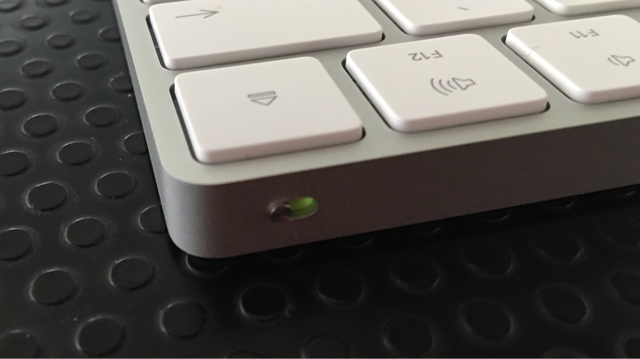
Das Magic Keyboard eignet sich wunderbar als Reisetastatur, weil es einen mechanischen Aussschalter hat. Damit wird es sich in der Tasche nicht selbsttätig einschalten, wenn die Tasten gedrückt werden. Sieht man mal vom Design ab, dann ich auch die Funktion einwandfrei. Es ist einfach eine sehr kleine und flache Desktop-Tastatur, mit der man überhaupt keine Umstellung hat. Man nutzt einfach sein iPad als iPad und wenn man mal mehr als eine Seite Text schreiben muss, dann nimmt man diese Tastatur in Betrieb, die man ja schon von zu Hause her kennt. Das aktuelle Magic Keyboard hat übrigens den gleichen Anschlag wie ein Macbook und auch die Cursortasten-Anordnung. Ich bin eher an das MacBook Pro und die alte Bluetooth-Tastatur gewöhnt.

Viele Mac-User haben das alte Modell noch im Schrank, ich habe sogar eins mit drei LR5/AA Batterien. Selbst dieses Uralt-Modell funktioniert immer noch mit den neuesten iPads. Diese alten Keyboards unterstützen allerdings nur Bluetooth 3.0 und damit kein Low Energy. Entsprechend brauchen sie mehr Strom, aber AA-Batterien und Akkus gibt es wirklich überall.

Das Magic Keyboard ist in der Funktion kompromisslos. Nur bei der Verpackung muss man etwas improvisieren. Ich hatte ursprünglich gedacht, dass ich diese Lösung dem Smart Keyboard vorziehen würde. Drei Tage Test haben aber ergeben, dass bei mir das Smart Keyboard gewinnt. Die Zehn-Finger-Schreiberin des Hauses hat ebenfalls den Segen gegeben. Kommentar: "Man trifft die Tasten sehr gut. Und weil sie in der Mitte mehr nachgeben, hat man die Finger sehr genau drauf liegen."
Ich würde also kein Magic Keyboard als Alternative anschaffen. Wer aber eins im Schrank hat, der sollte mal daran denken. Nur für den täglichen Wechsel zwischen iMac und iPas ist es nicht geeingnet. Das Bluetooth Pairing wird zu lästig.
I've been reading a bunch of the essays on David Chapman's Meaningness website lately, after seeing a link to one on Twitter. (Thanks, @kaledic.) This morning I read How To Think Real Good, about one of Chapman's abandoned projects: a book of advice for how to think and solve problems. He may never write this book as he once imagined it, but I'm glad he wrote this essay about the idea.
First of all, it was a fun read, at least for me. Chapman is a former AI researcher, and some of the stories he tells remind me of things I experienced when I was in AI. We were even in school at about the same time, though in different parts of the country and different kinds of program. His work was much more important than mine, but I think at some fundamental level most people in AI share common dreams and goals. It was fun to listen as Chapman reminisced about knowledge and AI.
He also introduced me to the dandy portmanteau anvilicious. I keep learning new words! There are so many good ones, and people make up the ones that don't exist already.
My enjoyment was heightened by the fact that the essay stimulated the parts of my brain that like to think about thinking. Chapman includes a few of the heuristics that he intended to include in his book, along with anecdotes that illustrate or motivate them. Here are three:
All problem formulations are "false", because they abstract away details of reality.
Solve a simplified version of the problem first. If you can't do even that, you're in trouble.
Probability theory is sometimes an excellent way of dealing with uncertainty, but it's not the only way, and sometimes it's a terrible way.
He elaborates on the last of these, pointing out that probability theory tends to collapse many different kinds of uncertainty into a single value. This does not work all that well in practice, because different kinds of uncertainty often need to be handles in very different ways.
Chapman has a lot to say about probability. This essay was prompted by what he sees as an over-reliance of the rationalist community on a pop version of Bayesianism as its foundation for reasoning. But as an old AI researcher, he knows that an idea can sound good and fail in practice for all sorts of reasons. He has also seen how a computer program can make clear exactly what does and doesn't work.
Artificial intelligence has always played a useful role as a reality check on ideas about mind, knowledge, reasoning, and thought. More generally, anyone who writes computer programs knows this, too. You can make ambiguous claims with English sentences, but to write a program you really have to have a precise idea. When you don't have a precise idea, your program itself is a precise formulation of something. Figuring out what that is can be a way of figuring out what you were really thing about in the first place.
This is one of the most important lessons college students learn from their intro CS courses. It's an experience that can benefit all students, not just CS majors.
Chapman also includes a few heuristics for approaching the problem of thinking, basically ways to put yourself in a position to become a better thinker. Two of my favorites are:
Try to figure out how people smarter than you think.
Find a teacher who is willing to go meta and explain how a field works, instead of lecturing you on its subject matter.
This really is good advice. Subject matter is much easier to come by than deep understanding of how the discipline work, especially in these days of the web.
The word meta appears frequently throughout this essay. (I love that the essay is posted on the metablog/ portion of his site!) Chapman's project is thinking about thinking, a step up the ladder of abstraction from "simply" thinking. An AI program must reason; an AI researcher must reason about how to reason.
This is the great siren of artificial intelligence, the source of its power and also its weaknesses: Anything you can do, I can do meta.
I think this gets at why I enjoyed this essay so much. AI is ultimately the discipline of applied epistemology, and most of us who are lured into AI's arms share an interest in what it means to speak of knowledge. If we really understand knowledge, then we ought to be able to write a computer program that implements that understanding. And if we do, how can we say that our computer program isn't doing essentially the same thing that makes us humans intelligent?
As much as I love computer science and programming, my favorite course in graduate school was an epistemology course I took with Prof. Rich Hall. It drove straight to the core curiosity that impelled me to study AI in the first place. In the first week of the course, Prof. Hall laid out the notion of justified true belief, and from there I was hooked.
A lot of AI starts with a naive feeling of this sort, whether explicitly stated or not. Doing AI research brings that feeling into contact with reality. Then things gets serious. It's all enormously stimulating.
Ultimately Chapman left the field, disillusioned by what he saw as a fundamental limitation that AI's bag of tricks could never resolve. Even so, the questions that led him to AI still motivate him and his current work, which is good for all of us, I think.
This essay brought back a lot of pleasant memories for me. Even though I, too, am no longer in AI, the questions that led me to the field still motivate me and my interests in program design, programming languages, software development, and CS education. It is hard to escape the questions of what it means to think and how we can do it better. These remain central problems of what it means to be human.
In-depth narrative, canary signal from mines of wage inequity between real & financial economies in the hot towns. https://t.co/tcnuQnu0Gk
— Peter Jones (@redesign) August 7, 2016
Theresa Harrington,
EdSource,
Aug 10, 2016
The least relevant part of the story is that the professor is from Stanford, but that's what leads in this article. It's also irrelevant that she has founded a company and visited the White House. Here's what's important: "open up math, show math as an open, growth subject, not a closed, fixed subject. Ask questions and value the different thinking kids reveal... Mathematics is a subject that allows for precise thinking, but when that precise thinking is combined with creativity, flexibility, and multiplicity of ideas, the mathematics comes alive for people." It's now about 'getting the answer', it's about being fluent in a mathematical language, seeing the world in a mathematical way, and habitually engaging in mathematical reasoning.
Ever willing to add a positive contribution to the discussion, Paul Kirschner comments that Harrington is "possibly the world's best known math eduquackademic" and refers to this paper (which of course cites Kirschner's own chapter) which argues that the Harrington approach "confuses pedagogy – the way we teach a body of knowledge – with epistemology – the way that a field gains new knowledge." Of course it does nothing of the kind - neither Kirschner nor his acolytes understand how new knowledge is actually generated in science. I've dealt with this before, at length.
[Link] [Comment]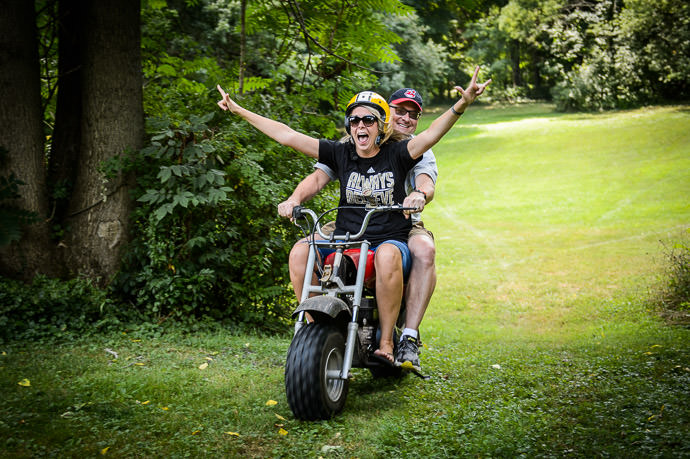

My brother Alan and his family stopped for a bit by my folks' place on their back home, for some fun and relaxation. Prior to saying goodbye, Titi joked around...


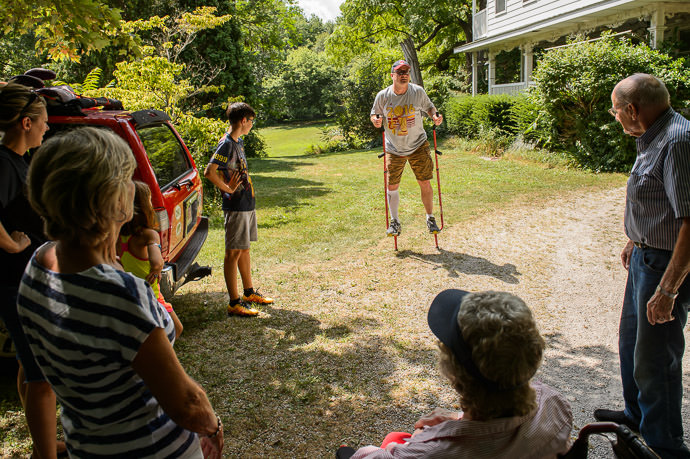
 )
)
|
mkalus
shared this story
from |
Why would the state need to know your name, phone number, where you live, wand how old you are when you buy beer? It’s unclear, but that kind of detailed info is exactly what Alabama regulators have proposed craft brewers collect from anyone buying beer to bring home.
The Alabama Alcoholic Beverage Control Board is considering a new rule [PDF] what would require brewers to collect that kind of information from anyone who purchases beer at a brewery for off-premise consumption, the Associated Press reports, and industry groups are not pleased: they’re calling it an invasion of privacy, and an administrative nightmare.
“As nonsensical as it might seem, this rule would essentially empower the ABC Board to come to an individual’s house to confirm his or her purchase of a six pack of beer,” Nick Hudson of Free The Hops, a grassroots organization, said in a statement this week.
The Alabama Brewers Guild also chimed in, saying collecting that kind of information would be a complicated endeavor, and could pose concerns about potential data breaches and government use of the information as well.
Regulators haven’t explained why it wants this information but ABG says the information would be used to verify enforcement of the state’s 288-ounce limit on the amount of brew anyone can purchase at one time.
“Individuals may not purchase more than 288 ounces a day from a brewery, and this provision would help the ABC Audit Division to ensure compliance,” the group said in a statement Thursday (h/t AL.com). “The ABC is trying to do their job, and we understand the reasoning. However, we believe there are less invasive ways to ensure compliance.”
The group says it will work with the ABC during this process, and will be submitting written input as part of the public comment period, which lasts through Sept. 7. The rule will be considered by the board on Sept. 28.
In June, a law took effect in the state that lets craft breweries sell six-packs, six packs, large bottles, and other containers of beer like growlers to consumers, as long as they stayed within that daily limit of 288 ounces.
Jeff Noonan,
Interventions, Evocations,
Aug 10, 2016
I'm generally sympathetic with the objectives of this post but less so with how it is presented. The main point, that "Teaching at the university level is not a practice of communicating or transferring information but awakening in students a desire to think by revealing to them the questionability of things," is the least well supported assertion in the piece, though it is probably the most contentious. Nonetheless, I agree with it. The move to make "a desire to think" over into a "love of thinking" is to me a bit questionable. But we agree that "this result is very different from mastering a certain body of knowledge or learning to apply certain rules to well-defined situations." As Noonan begins to trace the consequences of this position we finally encounter a series of references supporting his point. Alas, too little too late. Don't skip the comments, a good discussion dating from last March. Also there's an annotated version on hypothes.is, a defense of learning outcomes against Noonan here, and a good (though very critical) discussion here.
[Link] [Comment]The buildings are up, the hoardings are down – a new urban look for Pacific Boulevard from Cambie Bridge to BC Place:

Here’s roughly what it looked like before – way before, from the look of the stadium roof:

Note the new bike/ped way between the bridge and condo:

Coolest new feature: the swimming pool bubble in the courtyard of the condo:

But why the use of so much dark gray in an already light-constrained space?
At the end of May, eight New York Times product managers and engineers participated in Matter’s media startup accelerator bootcamp. Over four strenuous days, we learned the process of design thinking: a human-centered, prototype-driven approach to creating something that fills a meaningful need in someone’s life.
The bootcamp was a chance to collaborate with some of Matter’s other media partners: my team for the week included a photo editor from the Associated Press, the public editor of the Kansas City Star, and the CEO of PRX. Even though we all had vastly different professional backgrounds, the design thinking exercises we learned allowed us to start working as a productive team quickly.
Of all the techniques we learned in the course of the week, I want to focus specifically on some that can be applied to engineers working on cross-functional product teams.
Engineers are often partially immersed in product development, but writing code doesn’t feel like a user-focused task compared to a role like design or product management. Design thinking encourages the sort of radical collaboration that values diverse skill sets regardless of specialization.
As an early part of the design thinking process, we ventured onto the streets of Manhattan to talk to potential users and learn about their needs. We set aside our assumptions about what we expected to find and started by simply asking questions, listening, and then looking for patterns and insights in what we heard. Our subsequent ideation sessions and prototype development were informed by the perspective we’d gained.
This type of user empathy can help with technical decision-making as well. Performance considerations and other technical details that are delightful parts of a good user experience gain traction from an empathetic viewpoint. Plus, basing as many decisions as possible on feedback from real (or potential) users helps not only to ensure the success of the product but to prevent any individual’s preferences or biases from arbitrarily influencing it.
In our bootcamp ideation sessions, we set explicit norms around generating at least a hundred ideas and building on others’ suggestions rather than critiquing them. Once we had a hundred options to choose from, we concluded our brainstorming and voted on two or three we found most exciting and meaningful.
Most teams have some sort of hierarchy, with a limited number of decision-makers. Opportunities to widen the range of contributions — to include engineers and others less frequently invited to brainstorms — can be a valuable way to generate new ideas. Constructing a space with the shared understanding that everyone’s ideas are welcome permits that range of contributions.
When engineers actively participate in user research, facilitated brainstorms, or product ideation sessions, they have a larger stake in the team’s success, and that success is grounded in creating meaning for users.
The open-ended, exploratory nature of the design thinking process underscored the importance of adopting techniques that the entrepreneurs in Matter’s program use on a daily basis. Building low-res prototypes, testing them early, and iterating quickly all help to avoid investing resources in an untested product, which is just as important for large, risk-averse organizations as for small startups. We already use many of these techniques on the Beta team, but the Matter bootcamp reinforced the need to use them even more widely and consistently.
As media changes rapidly, we understand the need for lots of experiments. We’re participating in Matter’s partner parallel program to experiment more with design thinking, in an effort to find new ways to make The Times more useful to readers. Each month during the 20 weeks of the program, we gather with other partner companies and the entrepreneurs in Matter’s accelerator to pitch our ideas and receive feedback. It’s exciting to be surrounded by a community of innovators tackling similar challenges in media and technology — all with the goal of making media that matters.
Alex Ording is a software engineer on the NYT Beta team. She works on product development for Well. You can find her on Twitter at @alexording.

The title’s pure clickbait, but there’s a certain sense of strangeness when you realize that devices like the Mac mini are so woefully out of date (and overpriced) that a Hackintosh is wildly preferable.
Once a month, web developers from across Mozilla get together to talk about the work that we’ve shipped, share the libraries we’re working on, meet new folks, and talk about whatever else is on our minds. It’s the Webdev Extravaganza! The meeting is open to the public; you should stop by!
You can check out the wiki page that we use to organize the meeting, or view a recording of the meeting in Air Mozilla. Or just read on for a summary!
The shipping celebration is for anything we finished and deployed in the past month, whether it be a brand new site, an upgrade to an existing one, or even a release of a library.
First up was mythmon, who mentioned the new release of Normandy, the backend server for the SHIELD system that powers surveys and feature studies in Firefox. This release includes a new admin interface built using React and Redux, as well as a switch to client-side targeting that is powered by JEXL expressions.
Next was peterbe, who mentioned that Socorro, the crash-report service for Firefox, has added Google-based sign-in ahead of the planned shut-down of Persona. It’s planned to land in production sometime within the next week, and involves some extra work around triggering automatic sign-out of users who have been signed in for a certain amount of time.
ErikRose was next, and shared yet another list of new features developed by DXR intern new_one:
Here we talk about libraries we’re maintaining and what, if anything, we need help with for them.
Next was pmac in absentia, who wanted to share django-jinja-markdown, a fork of jingo-markdown. It adds support for rendering Markdown strings to HTML in templates rendered with django-jinja via a markdown filter, as well as a similarly-named template function. It also includes a block-level template tag that can be enabled by adding the library as a Jinja extension.
Back to peterbe, who shared json-schema-reducer. The Python-based library takes in a JSON Schema and a JSON object or dict, and returns the JSON object with only fields that are specified in the schema. The main use case for the library is taking Socorro crash reports, and whitelisting data that is appropriate to be sent to Mozilla’s Telemetry platform for analysis, removing sensitive data that isn’t meant to leave the crash report system.
The Roundtable is the home for discussions that don’t fit anywhere else.
Last up was ErikRose, who brought up the Getting Things Done methodology and how he recently has adopted it to help deal with his personal and professional time management. The video recording contains an extended discussion of time management strategies, but useful tools highlighted during the discussion include Things (OSX only), Org-Mode, and good old-fashioned sticky notes.
If you’re interested in web development at Mozilla, or want to attend next month’s Extravaganza, subscribe to the dev-webdev@lists.mozilla.org mailing list to be notified of the next meeting, and maybe send a message introducing yourself. We’d love to meet you!
See you next month!
The post Extravaganza – August 2016 appeared first on Mozilla Web Development.

As soon as you add a hardware keyboard to your iPad, you get a new setting under "Keyboards". Notice that I have two input languages as indicated by the (2) behind Keyboards. As you enter this new Hardware Keyboad Settings panel, you get a separate setting for each input language you have pre-selected.

For each of those languages you can select your preferred keyboard layout. There is no hardwiring. You could buy a US keyboard and apply the German layout. It does not really matter what is printed on the physical keys.

I chose the German keyboard layout for both German and English, because I don't have to switch around the layout inside my head. You can also do this for the on-screen keyboard if you want. The layout defaults to the language locale, but you customize it any way you want.
This mapping applies to all hardware keyboards, not only the iPad Pro connected Smart Keyboard but also to Bluetooth keyboards.
This here’s the bibliography I put together for the last chapter of my Radical Technologies: The Design of Everyday Life, forthcoming from Verso. I think it will probably give you a decent idea what I’m on about in this section of the book.
UPDATE: Dang, I just noticed that my copy-and-paste out of Scrivener failed to pick up three further citations. They are:
Powell, Alison. “Algorithms, accountability, and political emotion: On the cultural assumptions underpinning sentiment analysis,” London School of Economics Impact of Social Sciences blog, July 20th, 2016.
Shteyngart, Gary. Super Sad True Love Story: A Novel, New York: Random House, 2010.
Yaskawa Electric Corporation. “YASKAWA BUSHIDO PROJECT: Industrial robot vs sword master,” June 4th, 2015.
1 Keynes, John Maynard. “Economic Possibilities for our Grandchildren,” The Nation and Athenaeum, Vol 48 Issues 2 & 3, October 11th & 18th, 1930.
2 Economic Report of the President, February 2016. Washington DC: Government Printing Office, 2016.
3 O’Reilly, Tim. “Managing the Bots That Are Managing the Business,” MIT Sloan Management Review, May 31st, 2016.
4 McEleny, Charlotte. “McCann Japan hires first artificially intelligent creative director,” The Drum, March 29th, 2016.
5 Bostrom describes a quiverfull of these as “decision trees, logistic regression models, support vector machines, naive Bayes, [and] k-nearest neighbor regression, among others.” Bostrom, Nick. Superintelligence: Paths, Dangers, Strategies, Oxford, UK: Oxford University Press, 2014.
6 Mick, Jason. “Foxconn Billionaire Hints at Robotic Apple Factory, Criticizes Dead Employees,” DailyTech, June 30th, 2014.
7 An advertisement for Columbia/Okura palletizing robots touts, even ahead of their “surprising affordability,” the fact that they “eliminate costly stacking-related injuries.”
8 International Labor Organization. “Global Wage Report, 2014/2015,” December 5th, 2014.
9 Chamayou, Grégoire. Drone Theory, London: Penguin, 2015; Singer, P.W. Wired for War: The Robotics Revolution and Conflict in the 21st Century, New York: Penguin Press, 2009.
10 United States Department of Health and Human Services, Centers for Disease Control and Prevention. “Motor Vehicle Crash Deaths,” July 6th, 2016.
11 United States Department of Transportation, National Highway Traffic Safety Administration. “Critical Reasons for Crashes Investigated in the National Motor Vehicle Crash Causation Survey,” February 2015. See also Bryant Walker Smith’s comprehensive review of causation statistics.
12 United States Department of Transportation, National Highway Traffic Safety Administration. “Economic and Societal Impact Of Motor Vehicle Crashes, 2010 (Revised),” May 2015.
13 Grossman, Lt. Col. Dave. On Killing: The Psychological Cost of Learning to Kill In War and Society, London: Little, Brown, 1995.
14 The reality of the US remote assassination program is comprehensively detailed in The Intercept, “The Drone Papers,” October 15th, 2015.
15 Gonzales, Daniel and Sarah Harting, “Designing Unmanned Systems With Greater Autonomy,” Santa Monica: RAND Corporation, 2014; United Nations General Assembly. “Report of the Special Rapporteur on extrajudicial, summary or arbitrary executions: Lethal Autonomous Robotics and the protection of life,” April 9th, 2013. For a poignant, if chilling, depiction of an autonomous combat system nearing the threshold of self-awareness, see Watts, Peter. “Malak,” rifters.com, 2010.
16 American Civil Liberties Union, “War Comes Home: The Excessive Militarization of American Policing,” June 2014. See also Else, Daniel H. “The ‘1033 Program,’ Department of Defense Support to Law Enforcement,” Congressional Research Service, August 28th, 2014.
17 Williams, Alex and Nick Srnicek, “#ACCELERATE MANIFESTO for an Accelerationist Politics,” Critical Legal Thinking, May 14th, 2013.
18 Novara Media. “Fully Automated Luxury Communism,” podcast, June 2015.
19 Yeoman, Ian and Michelle Mars. “Robots, Men and Sex Tourism,” Futures Vol. 44, May 2012: pp. 365-371.
20 Firestone, Shulamith. The Dialectic of Sex, New York: Bantam Books, 1971.
21 Solanas, Valerie. SCUM Manifesto, New York: Olympia Press, 1968.
22 Kitchin, Rob. The Data Revolution: Big Data, Open Data, Data Infrastructures & their Consequences, London: Sage Publications, 2014.
23 Rosenberg, Daniel. ”Data Before The Fact,” in Gitelman, Lisa, ed., “Raw Data” Is An Oxymoron, Cambridge, MA: MIT Press, 2013.
24 Readers who would like to pursue these questions in greater depth are directed to the excellent Critical Algorithm Studies reading list maintained by Tarleton Gillespie and Nick Seaver of Microsoft Research’s Social Media Collective.
25 A more rigorous and detailed, though still accessible, history of artificial intelligence research can be found in Bostrom 2014 op. cit.
27 Barr, Alistair. “Google Mistakenly Tags Black People as ‘Gorillas,’ Showing Limits of Algorithms,” The Wall Street Journal, July 1st, 2015.
28 Khosla, Aditya et al. “Novel dataset for Fine-Grained Image Categorization,” First Workshop on Fine-Grained Visual Categorization, IEEE Conference on Computer Vision and Pattern Recognition, 2011.
29 ImageNet. “Large Scale Visual Recognition Challenge 2012.”
30 Stavens, David M. “Learning to Drive: Perception for Autonomous Cars,” Ph.D dissertation, Stanford University Department of Computer Science, May 2011.
31 Bui, Quoctrung. “Map: The Most Common* Job In Every State,” National Public Radio, February 5th, 2015.
32 Musk, Elon. “Master Plan, Part Deux,” July 20th, 2016.
33 See the site of Amazon’s fully-owned robotics subsidiary, and the video of one of its warehouses in operation.
34 Pew Research Center. “Digital Life in 2025: AI, Robotics and the Future of Jobs,” August 6th, 2014.
35 In fairness, while nobody invokes the Bui map directly, several of Pew’s respondents did point out that truck driver is the number-one occupation for men in the United States, and that alongside taxi drivers, current holders of the job would be among the first to be entirely displaced by automation. The Gartner research firm takes a still harder line, predicting that one in three workers will be displaced by robotics or artificial intelligence by 2025. See Thibodeau, Patrick. “One in three jobs will be taken by software or robots by 2025,” ComputerWorld, October 6th, 2014.
36 Frey, Carl Benedikt and Michael A. Osborne. “The Future of Employment: How Susceptible Are Jobs To Computerisation?,” Oxford Martin Program on the Impacts of Future Technology, September 17th, 2013.
37 Frey, Carl Benedikt et al. “Technology At Work v2.0: The Future Isn’t What It Used To Be,” Citi Global Perspective & Solutions, January 2016.
38 World Economic Forum, “The Future of Jobs Employment, Skills and Workforce Strategy for the Fourth Industrial Revolution,” January 18th, 2016.
39 Elliott, Larry. “Robots threaten 15m UK jobs, says Bank of England’s chief economist,” The Guardian, November 12th, 2015.
40 Kasperkevic, Jana. “McDonald’s CEO: robots won’t replace workers despite tech opportunities,” The Guardian, May 26th, 2016.
41 Machkovech, Sam. “McDonald’s ex-CEO: $15/hr minimum wage will unleash the robot rebellion,” Ars Technica, May 25th, 2016.
42 Soper, Spencer. “Inside Amazon’s Warehouse,” Lehigh Valley Morning Call, September 18th, 2011. For a comparable and equally disturbing look at the conditions Amazon’s white-collar workers contend with, see Kantor, Jodi and David Streitfeld, “Inside Amazon: Wrestling Big Ideas in a Bruising Workplace,” The New York Times, August 25th, 2015.
43 Kosner, Anthony Wing. “Google Cabs And Uber Bots Will Challenge Jobs ‘Below The API’,” Forbes, February 4th, 2015.
44 Silverman, Stuart. “Target’s Cashier Game – Is It Really a Game?,” LevelsPro, November 29th, 2011.
45 Frucci, Adam. “Target Makes Cashiering More Tolerable By Turning It Into a Game,” Gizmodo, December 8th, 2009.
46 Theatro. “The Container Store Enhances Customer Experience and Operational Productivity with Nationwide Rollout of Theatro’s Voice-Controlled Wearable,” June 14th, 2016.
47 Yano, Kazuo et al. “Measurement of Human Behavior: Creating a Society for Discovering Opportunities,” Hitachi Review Vol. 58, No. 4, 2009, p. 139.
48 Hitachi Ltd. “Business Microscope Identifies Key Factors Affecting Call Center Performance,” July 17th, 2012.
49 Lohr, Steve. “Unblinking Eyes Track Employees,” The New York Times, June 21st, 2014.
50 Deleuze, Gilles. “Postscript on the Societies of Control,” October Vol. 59. (Winter, 1992), pp. 3-7.
51 Poole, Steven. “Why the cult of hard work is counter-productive,” The New Statesman, December 11th, 2013.
52 Streitfeld, David. “Data-Crunching Is Coming to Help Your Boss Manage Your Time,” The New York Times, August 17th, 2015.
53 Ganeva, Tana. “Biometrics at Pizza Hut and KFC? How Face Recognition and Digital Fingerprinting Are Creeping Into the U.S. Workplace,” AlterNet, September 26th, 2011.
54 Downie, James. “Japanese railway company scanning employees’ smiles,” Foreign Policy, July 7th, 2009.
55 Payne, Brian, Colin Sloman and Himanshu Tambe, “IQ plus EQ: How technology will unlock the emotional intelligence of the workforce of the future,” Accenture Strategy, January 7th, 2016. See also Hochschild, Arlie Russell. The Managed Heart: Commercialization of Human Feeling, Oakland: University of California Press, 1983.
56 BetterWorks Systems, Inc. Website, 2016.
57 Burt, Ronald S. “Structural Holes and Good Ideas,” American Journal of Sociology, Vol 110 Number 2, 2004, pp. 349-399.
58 Bicknell, David. “Sloppy human error still prime cause of data breaches,” Government Computing, June 2nd, 2016.
59 Baker, Dean. “The Job-Killing Robot Myth,” Center for Economic Policy Research, May 6th, 2015.
60 Blunden, Mark. “Enfield Council uses robotic ‘supercomputer’ instead of humans to deliver frontline services,” Evening Standard, June 16th, 2016.
61 Hongo, Jun. “Fully Automated Lettuce Factory to Open in Japan,” The Wall Street Journal, August 21st, 2015.
62 Tankersley, Jim. “Robots are hurting middle class workers, and education won’t solve the problem, Larry Summers says,” The Washington Post, March 3rd, 2015.
63 Dyer-Witheford, Nick. Cyber-Marx: Cycles and Circuits of Struggle in High-technology Capitalism, Urbana: University of Illinois Press, 1999. See also Summers, Lawrence H. “The Inequality Puzzle,” Democracy, Summer 2014 No. 33.
64 Graeber, David. “On the Phenomenon of Bullshit Jobs,” STRIKE!, August 17th, 2013.
65 Van Trier, Walter. “Who Framed ‘Social Dividend’?,” USBIG Discussion Paper No. 26, March 2002. See also Danaher, John. “Libertarianism and the Basic Income (Part One),” Philosophical Disquisitions, December 17th, 2013; Gordon, Noah. “The Conservative Case for A Guaranteed Basic Income,” The Atlantic, August 2014.
66 Alberti, Mike and Kevin C. Brown. “Guaranteed income’s moment in the sun,” Remapping Debate, April 24th, 2013; Bregman, Rutger. “Nixon’s Basic Income Plan,” Jacobin, May 5th, 2016.
67 Grice, Will. “Finland plans to give every citizen 800 euros a month and scrap benefits,” The Independent, December 6th, 2015; Hamilton, Tracy Brown. “The Netherlands’ Upcoming Money-for-Nothing Experiment,” The Atlantic, June 21st, 2016.
68 See the archives of the Waterfront Workers History Project.
69 Siegel, Jenifer Z. and Molly J. Crockett. “How serotonin shapes moral judgement and behavior,” Annals of the New York Academy of Sciences, September 2013; 1299(1): pp. 42–51.
70 Danaher, John. “Will life be worth living in a world without work? Technological Unemployment and the Meaning of Life,” Science and Engineering Ethics, forthcoming.
71 Arendt 1958 op. cit.
72 Zeeberg, Amos. “Alienation Is Killing Americans and Japanese,” Nautilus, June 1st, 2016.
73 United Nations General Assembly, op cit.
74 Greenfield, Adam. “Against the smart city,” New York: Do projects, 2013.
75 I have often remarked on this propensity in the past, in just about so many words, not least in my 2013 pamphlet cited above. I point it out again here because it keeps happening, equally word-for-word. Some reflexes are apparently immune to mockery.
76 See image.
77 Kelley, Richard et al. “Context-Based Bayesian Intent Recognition,” IEEE Transactions on Autonomous Mental Development, Volume 4 Number 3, September 2012.
78 Socher, Richard et al. “Recursive Deep Models for Semantic Compositionality Over a Sentiment Treebank,” Proceedings of the 2013 Conference on Empirical Methods in Natural Language Processing, pp. 1631–1642, Stroudsburg, PA, October 2013.
79 Sullivan, Bob. “Police sold on Snaptrends, software that claims to stop crime before it starts,” bobsullivan.net, September 4th, 2014.
80 Ibid.
81 Mirani, Leo. “Millions of Facebook users have no idea they’re using the internet,” Quartz, February 9th, 2015.
82 Huet, Ellen. “Server And Protect: Predictive Policing Firm PredPol Promises To Map Crime Before It Happens,” Forbes, February 11th, 2015.
83 Ibid.
84 Mitchell, Robert L. “Predictive policing gets personal,” ComputerWorld, October 24th, 2013.
85 Stanley, Jay. “Chicago Police ‘Heat List’ Renews Old Fears About Government Flagging and Tagging,” American Civil Liberties Union, February 25th, 2014.
86 McCarthy, Garry F., Superintendent of Police, City of Chicago. “Custom Notifications In Chicago — Pilot Program,” Chicago Police Department Directive D13-09, July 7th, 2013.
87 Callahan, Yesha. “Chicago’s Controversial New Police Program Prompts Fears Of Racial Profiling,” Clutch, February 2014.
88 On January 6th, 2014, the Chicago Police Department Office of Legal Affairs denied Freedom of Information Act request 14-0023, which had sought information pertaining to the Heat List program, on grounds that its disclosure would “endanger the life or physical safety of law enforcement personnel or any other person.”
89 The problem of police misconduct is so pervasive and of such long standing in the city that the Chicago Tribune website maintains a standing category dedicated to it. (Not all of the articles linked concern the Chicago police, but the great majority do.) A representative article is Sweeney, Annie. “Chicago doesn’t discipline rogue cops, scholar testifies in bar beating trial,” Chicago Tribune, October 24th, 2012.
90 Ackerman, Spencer. “The disappeared: Chicago police detain Americans at abuse-laden ‘black site’,” The Guardian, February 24th, 2015.
– “Homan Square revealed: how Chicago police ‘disappeared’ 7,000 people,” The Guardian, October 19th, 2015.
91 Clark, Matthew and Gregory Malandrucco. “City of Silence,” Vice, December 1st, 2014.
92 Accenture. “London Metropolitan Police Service and Accenture Police Solutions Complete Analytics Pilot Program to Fight Gang Crime,” 2015.
93 Ibid.
94 Berg, Nate. “Predicting crime, LAPD-style,” The Guardian, June 25th, 2014.
95 Brantingham, Paul J. and Patricia L. Brantingham. “Notes on the geometry of crime,” In P.J. Brantingham and P.L. Brantingham eds., Environmental Criminology, Beverly Hills, CA: Sage Publications, 1981. See also Eck, John E. and David Weisburd. “Crime Places In Crime Theory,” In J. Eck, J. and D. Weisburd eds., Crime And Place. Crime Prevention Studies No. 4., Monsey, NY: Criminal Justice Press, 1995 and Hodgkinson, Sarah and Nick Tilley. “Travel-to-Crime: Homing In On The Victim,” International Review of Victimology Vol. 14, pp. 281–298, 2007.
96 Stroud, Matt. “The minority report: Chicago’s new police computer predicts crimes, but is it racist?,” The Verge, February 19th, 2014.
97 Davey, Monica. “Chicago Police Try to Predict Who May Shoot or Be Shot,” The New York Times, May 23rd, 2016; Robinson, David. “Chicago police have tripled their use of a secret, computerized ‘heat list,’” EqualFuture, May 26th, 2016.
98 Davey 2016 op. cit.
99 Ferguson, Andrew Guthrie. “Policing Predictive Policing,” Washington University Law Review, Vol. 94, 2017.
100 My account here is indebted to the reporting a team of journalists with the FiveThirtyEight blog conducted in collaboration with the Marshall Project.
101 Visher, Christy A. “Transitions From Prison To Community: Understanding Individual Pathways,” The Urban Institute, Justice Policy Center, Washington, DC., 2003.
102 Langan, Patrick A. and David J. Levin. “Recidivism of Prisoners Released in 1994.” Washington, DC: U.S. Department of Justice, Office of Justice Programs, Bureau of Justice Statistics, 2002.
103 Barry-Jester, Anna Maria, Ben Casselman and Dana Goldstein.“The New Science of Sentencing,” The Marshall Project, August 4th, 2015.
104 Hardt, Moritz. ”How big data is unfair: Understanding sources of unfairness in data-driven decision-making,” Medium, September 26th, 2014.
105 Angwin, Julia et al. “Machine Bias,” Pro Publica, May 23rd, 2016.
106 Carson. E. Ann. Prisoners in 2014, Washington DC: US Department of Justice Bureau of Justice Statistics, September 2015.
107 Humes, Karen R., Nicholas A. Jones and Roberto R. Ramirez. “Overview of Race and Hispanic Origin: 2010,” US Census Bureau, March 2011.
108 Palamar, Joseph J., et al. “Powder cocaine and crack use in the United States: An examination of risk for arrest and socioeconomic disparities in use,” Drug & Alcohol Dependence, Vol 149, April 1st, 2015, pp 108-116.
109 Tett, Gillian. “Mapping crime – or stirring hate?”, The Financial Times, August 22nd, 2014.
A line in Tett’s FT coverage of the CPD’s precrime initiative is also inadvertently revealing: ”Thus the police can be in the right spot, at the right time, even when resources are being cut due to fiscal austerity.” This is, again, one of those bizarre, almost non sequitur introjections of a neoliberal justificatory logic that seem to crop up so often in discussions of information technology. Apparently it didn’t interest Tett to ask if it might not be cheaper or more effective to avoid eliminating those policing resources in the first place.
110 State of Michigan Department of Technology, Management & Budget, Contract 071B3200096, January 11th, 2011. See Change Notice Number 8, effective January 26th, 2016.
111 Anderson, Ben. “Preemption, precaution, preparedness: Anticipatory action and future geographies,” Progress in Human Geography 34.6 (2010): pp. 777-798.
112 Donohue, John J. III and Steven D. Levitt. “The Impact of Legalized Abortion on Crime,” The Quarterly Journal of Economics, Volume CXVI, Issue 2, May 2001.
113 Rosenberg, Daniel. “Data before the Fact,” in Gitelman, Lisa, ed. “Raw Data” Is An Oxymoron, Cambridge: The MIT Press, 2013. See also Poovey, Mary. A History of The Modern Fact: Problems of Knowledge In The Sciences of Wealth and Society, Chicago: University of Chicago Press, 1998.
114 Eno, Brian and Peter Schmidt. Oblique Strategies: Over One Hundred Worthwhile Dilemmas, London: Opal Ltd., January 1975.
115 Ricanek Jr., Karl and Chris Boehnen. “Facial Analytics: From Big Data to Law Enforcement,” Computer Volume 45, Number 9, September 2012.
116 Arthur, Charles. “Quividi defends Tesco face scanners after claims over customers’ privacy,” The Guardian, November 4th, 2013.
117 Sethuram, Amrutha et al. “Facial Landmarking: Comparing Automatic Landmarking Methods with Applications in Soft Biometrics,” Computer Vision – ECCV 2012, October 7th, 2012.
118 Butler, Judith. Gender Trouble: Feminism and the Subversion of Identity, New York and London: Routledge, 1990.
119 Khryashchev, Vladimir et al. “Gender Recognition via Face Area Analysis,” Proceedings of the World Congress on Engineering and Computer Science 2012 Volume 1, October 24, 2012.
120 Greenfield, Adam. Everyware: The dawning age of ubiquitous computing, Berkeley: New Riders, 2006.
121 Venkatesh, Sudhir Alladi. Off The Books: The Underground Economy of the Urban Poor, Cambridge, MA: Harvard University Press, 2006.
122 Tonkiss, Fran. “Informality and its discontents,” in Angélil, Marc and Rainer Hehl, eds., Informalize!: Essays on the Political Economy of Urban Form. Berlin: Ruby Press, 2012.
123 The Digital Matatus Project. “Digital Matatus: Collaborative Mapping For Public Transit Everywhere,” 2015.
124 Williams, Sarah. Personal communication, November 11th, 2013.
125 Scott, James C. Seeing Like A State: How Certain Schemes to Improve the Human Condition Have Failed, New Haven: Yale University Press, 1998.
126 Wa Mungai, Mbugua. Nairobi’s Matatu Men: Portrait Of A Subculture, Nairobi: Goethe-Institut Kenya, 2013.
127 Walker, Shaun. “Face recognition app taking Russia by storm may bring end to public anonymity,” The Guardian, May 17th, 2016.
128 Rothrock, Kevin. “The Russian Art of Meta-Stalking,” Global Voices Advox, April 7th, 2016.
129 Russon, Mary-Ann. “Russian trolls outing porn stars and prostitutes with neural network facial recognition app,” International Business Times, April 27th, 2016.
130 Lin, Weiyao, et al. “Group event detection for video surveillance,” 2009 IEEE International Symposium on Circuits and Systems, May 24th, 2009.
131 Hu, Nan, James Decraene and Wentong Cai. “Effective crowd control through adaptive evolution of agent-based simulation models,” Proceedings of the 2012 Winter Simulation Conference, December 9th, 2012. 10.1109/WSC.2012.6465040
Park, Andrew J. et al. “A Decision Support System for Crowd Control Using Agent-Based Modeling and Simulation,” 2015 IEEE International Conference on Data Mining Workshop, November 14th, 2015. http://dx.doi.org/10.1109/ICDMW.2015.249
132 Torrens, Paul. Personal conversation, April 14th, 2008. See also http://www.geosimulation.org/riots.html
133 Greenfield 2013 op. cit.
134 Difallah, Djellel Eddine, Philippe Cudré-Mauroux and Sean A. McKenna. “Scalable Anomaly Detection for Smart City Infrastructure Networks,” IEEE Internet Computing, Volume 17 Number 6, November-December 2013.
135 Knight, Will. “Baidu Uses Map Searches To Predict When Crowds Will Get Out Of Control,” MIT Technology Review, March 24th, 2016.
136 Schneier, Bruce. “Technologies of Surveillance,” March 5th, 2013.
137 Canetti, Elias. Crowds and Power, New York: Farrar, Straus and Giroux, 1984.
138 Pasquale, Frank. The Black Box Society: The Secret Algorithms Behind Money and Information, Cambridge, MA: The Harvard University Press, 2015.
139 Though even here there is increasing pressure to use algorithmic guidelines in the selection of applicants, or at least in crafting the terms they will differentially be offered. See McGrath, Maggie. “The Invisible Force Behind College Admissions,” Forbes, July 30th, 2014.
140 Dwoskin, Elizabeth. “Lending Startups Look at Borrowers’ Phone Usage to Assess Creditworthiness,” The Wall Street Journal, November 30th, 2015.
141 Traub, Amy. “Discredited: How Employment Credit Checks Keep Qualified Workers Out Of A Job,” Demos, March 4th, 2013.
142 Dwoskin 2015 op.cit. See also Andrews, Lori. I Know Who You Are And I Saw What You Did, New York: Free Press, 2011.
143 This is Marilyn Strathern’s rather more accessible gloss of Goodhart’s original statement, “Any observed statistical regularity will tend to collapse once pressure is placed upon it for control purposes.” Strathern, Marilyn. “‘Improving ratings’: audit in the British University system,” European Review Volume 5 Issue 3, July 1997, pp 305-321. See also Simon, David, Kia Corthron, Ed Burns and Chris Collins, The Wire, Season 4 Episode 9: “Know Your Place,” first aired 12 November 2006.
144 United States Federal Trade Commission. “Your Equal Credit Opportunity Rights,” January 2013.
145 O’Neil, Cathy. “Summers’ Lending Club makes money by bypassing the Equal Credit Opportunity Act,” Mathbabe, August 29th, 2013.
146 Lobosco, Katie. “Facebook friends could change your credit score,” CNN Money, August 27th, 2013.
147 Ibid.
148 Goodman, Bryce and Seth Flaxman. “EU regulations on algorithmic decision-making and a “right to explanation,” 2016 ICML Workshop on Human Interpretability in Machine Learning, New York.
149 Kroll, Alice and Ernest A. Testa. “Predictive Modeling for Life Underwriting,” Predictive Modeling for Life Insurance Seminar, May 19th, 2010.
150 Recall Karl Rove: “We’re an empire now, and when we act, we create our own reality. And while you’re studying that reality — judiciously, as you will — we’ll act again, creating other new realities, which you can study too, and that’s how things will sort out. We’re history’s actors…and you, all of you, will be left to just study what we do.” Suskind, Ron. “Faith, Certainty and the Presidency of George W. Bush,” The New York Times, October 17th, 2004.
151 Tabarrok, Alex. “The Rise of Opaque Intelligence,” Marginal Revolution, February 20th, 2015.
152 Stafford-Fraser, Quentin. Facebook comment, June 2016.
153 Mannon, Travis. “Facebook Outreach Tool Ignores Black Lives Matter,” The Intercept, June 9th, 2016.
154 This is easier to do than it is to explain.
155 Murphy, David. “Amazon Algorithm Price War Leads to $23.6-Million-Dollar Book Listing,” PC, April 23rd, 2011.
156 United States Commodity Futures Trading Commission and Securities and Exchange Commission. “Findings Regarding The Market Events of May 6, 2010,” September 30th, 2010.
157 United States Securities and Exchange Commission.“SEC Approves New Stock-by-Stock Circuit Breaker Rules,” Press Release 2010-98, June 10th, 2010.
158 Tesla Motors, Inc. “Your Autopilot Has Arrived.” October 14th, 2015.
159 Davies, Alex. “The Model D is Tesla’s Most Powerful Car Ever, Plus Autopilot,” Wired, October 10th, 2014.
160 Lavrinc, Damon. “Tesla Auto-Steer Will Let Drivers Go From SF To Seattle Hands-Free,” Jalopnik, March 19th, 2015.
161 Fingas, Roger. “‘Apple Car’ rollout reportedly delayed until 2021, owing to obstacles in ‘Project Titan,’” AppleInsider, July 21st, 2016.
162 Yadron, Danny and Dan Tynan. “Tesla driver dies in first fatal crash while using autopilot mode,” The Guardian, July 1st, 2016.
163 Musk, Elon. Tweet, April 17th, 2016.
164 Tesla Motors, Inc. “A Tragic Loss,” June 30th, 2016.
165 Tesla Motors, Inc. “Misfortune,” July 6th, 2016.
166 Lambert, Fred. “Google Deep Learning Founder says Tesla’s Autopilot system is ‘irresponsible’,” Electrek, May 30th, 2016.
167 Bourré, August C. Comment, Speedbird blog, May 28th, 2014.
168 Morris, David Z. “Trains and self-driving cars, headed for a (political) collision,” Fortune, November 2nd, 2014.
169 Americans For Prosperity Florida. “Economic Freedom Scorecard: 2016 Legislative Session,” May 3rd, 2016.
170 Hawkins, Jeff. Keynote speech, “Why Can’t a Computer Be More Like a Brain? How a New Theory of Neocortex Will Lead to Truly Intelligent Machines,” O’Reilly Emerging Technology Conference 2007, San Diego, CA, March 27th, 2007.
171 The Next Rembrandt project. Website, undated.
172 Silver, David, et al. “Mastering the game of Go with deep neural networks and tree search,” Nature, Volume 529, Issue 7587, pp. 484–489, January 28th, 2016.
173 An, Younggil and David Ormerod. Relentless: Lee Sedol vs Gu Li, Go Game Guru, 2016.
174 Nature Video, “The computer that mastered Go,” January 27th, 2016.
175 Ormerod, David. “AlphaGo shows its true strength in 3rd victory against Lee Sedol,” Go Game Guru, March 12th, 2016.
176 See Machii’s official website.
177 Metz, Cade. “The Sadness and Beauty of Watching Google’s AI Play Go.” Wired, March 11th, 2016.
178 Liss, Jo. Tweet, December 8th, 2015. The tweets that follow are a cogent argument as well.
179 Levesque, Hector J., Ernest Davis and Leora Morgenstern. “The Winograd Schema Challenge,” Proceedings of the Thirteenth International Conference on Principles of Knowledge Representation and Reasoning, 2012.
180 Salthouse, Timothy A. “When does age-related cognitive decline begin?,” Neurobiology of Aging, April 2009, Volume 30, Issue 4, pp. 507–514.
“People use Tails to chat off-the-record, browse the web anonymously, and share sensitive documents. Many human rights defenders depend on Tails to do their daily work, if not simply to stay alive.” – Tails developer team
“We think that the Web will only be truly open when we own the means of locating information in the billions of documents at our disposal. Creating PeARS is a way to put the ownership of the Web back into people’s hands.” – Aurelie Herbelot, PeARS
“Item 4 of Mozilla’s Manifesto states, ‘Individuals’ security and privacy on the Internet are fundamental and must not be treated as optional.’ This is the primary philosophy behind Caddy, the first and only web server to use HTTPS by default.” –Matt Holt, Caddy
Last quarter’s Mozilla Open Source Support (MOSS)-awarded projects are diverse, but they have one thing in common: they believe in innovation for public benefit. Projects like Tails, PeARS and Caddy are paving the way for the next wave of openness, which is why Mozilla has allocated over $3.5 million to the MOSS initiative in support of these and other open source projects. We’re excited to share the program’s progress this quarter, which includes $585,000 in awards, nine new projects supported and two new tracks launched.
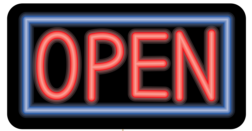
One of the new tracks is “Mission Partners”, which supports any open source project which meaningfully advances the Mozilla mission. We had a large number of applications in the initial round, of which we have already funded eight (for a total of $385,000) and are still considering several more. Applications for “Mission Partners” remain open on an ongoing basis.
The second is our “Secure Open Source” track, which works on improving the security of open source software by providing manual source code audits for important and widely-used pieces of free software. By the end of the second quarter we completed three audits – for the PCRE regular expression library, the libjpeg-turbo image decoding library, and the phpMyAdmin database administration software – with more in the pipeline. We hope that Secure Open Source will grow to be supported by multiple parties with an interest in improving the state of the Internet infrastructure – from companies to non-profits to governments. You can submit a suggestion for a project which might benefit from SOS support.
Our initial track, “Foundational Technology”, which supports projects that Mozilla already uses, integrates or deploys in our infrastructure, was launched late last year and remained open during this quarter. We made one additional award – to PyPy, the Python JIT compiler, for $200,000. Applications for a “Foundational Technology” award remain open.
Mozilla is proud to support the open source community of which we are a part and from which so many benefit. We look forward to enabling even more OS maintenance, improvement and innovation through MOSS, so please apply! The committee meets next in early September, so get your applications in by the end of August.
Kevin is attempting to publish something every day. This is hard, though I actually managed it in 2015. I think it was worthwhile, I'm going to try again.
For what it's worth, here are the 'rules' that helped me do it.
I had tried to convert my data-saving workflows to feather but there have been issues with it supporting large files (that seem to be near resolution), so I’ve been continuing to use R Data files for local saving of processed/cleaned data.
I make many of these files and sometimes I do it as a one-off effort, thinking that I’ll come back to it quickly. Inevitably, I don’t do that and also end up naming those one-offs badly. I made a small R helper package to make it easier to wrap up checking out these files at the command-line (via a bash function) but it hit me that it’d be even easier if there was a way to use the macOS Quick Look feature (hitting <spacebar> on a file icon) to see the previews.
Thus, QuickLookR was born.
You need to download the ZIP file, unzip it and save the QuickLookR.qlgenerator component into ~/Library/QuickLook. Then devtools::install_github('hrbrmstr/rdatainfo') in an R session. If you’ve got R/Rscript in the standard /usr/local/bin location, then you should be able to hit <spacebar> on any .rdata, .rda or .rds file and see a str() preview like this:
I haven’t cracked open Xcode in a while and my Objective-C is super-rusty, but this works on my El Capitan MacBook Pro (though I’m trying to see why some .rds files embedded in packages on my system have no previews).
If you have suggestions or issues, please use github to file them. For issues, it’d be really helpful if you included a copy of or link to files that don’t work well.
For the next revision, I plan on generating prettier HTML-based previews and linking against R.framework to avoid a call out to the system.
If Wes/Hadley really have fixed feather, I’ll be making a QuickLook plugin for that file format as well in the very near future.
The Summer Olympics have just begun, and what better way to keep up with Team Canada than a dedicated Rio 2016 app created by Canada’s Olympic Network? CBC Rio 2016 provides users with on-the-go video streaming and real-time news about Canadian athletes in a simple, well-designed format packed with behind-the-scenes interviews.
The CBC Rio 2016 app features four main tabs running across the top: ‘Headlines,’ the default home page; ‘Must Watch,’ which highlights select video clips; ‘Rio Now,’ a live feed of social media posts; and ‘Results,’ which holds scores, athletes and the schedule for Canadian events.
Additionally, the sidebar menu provides more specific categories, such as ‘Photos’ and ‘Sports,’ where you can search by the type of athletics you’d like to follow.
One of the handiest aspects of the app, however, is its notifications settings. If you’re the type of sports fans that wants immediate info, you can set up push notifications for medal events and breaking news. If you’d rather have everything tidily summed up, CBC Rio 2016 can notify you with the daily medal summary instead.
While the video-laden app can sometimes act a bit laggy, its well-designed user experience makes it an overall satisfactory mobile experience– perfect for discrete mid-day work breaks spent cheering on the Great White North.
Concise, effective, and relatable. Apple is helping Google make these ads by shipping 16 GB iPhones as base models in 2016.
→ Source: youtu.be
Today I travelled to Brothers Creek Loop in West Vancouver.The tall Western Red Cedars were so beautiful to look at in the forest. I look forward to my next nature adventure and I’m enjoying my summer.
To recap: On Sunday, July 31st, I completed Cycle 20 Week 1. I have Multiple Myeloma and anemia, a rare blood cancer. It is incurable, but treatable. From February to November 2013, I received Velcade chemo through weekly in-hospital injections as an outpatient. Since February 9th 2015, I have been on Pomalyst and dexamethasone chemo treatment (Pom/dex).
Weekly chemo-inspired self-portraits can be viewed in my flickr album.
The post Week 77 chemo compete: Big rock in the forest appeared first on Fade to Play.
Hard not to be cynical about the ‘Olympic spirit’. Hard to get a definition of it, too.

On November 12, 2002 -- yes, my memory is terrible as in 'I don't forget' -- I read a dossier about myself. And it was very good.
I was in Florence for an IBM event and I returned from a party to our hotel (@Vesey, this is where me met). At the welcome desk I picked up some material and in that stack of paper, there was a folder intended for an IBM executive, preparing her for the event. This was the first time I read the "other side".
Then yesterday I read this tweet by my esteemed colleague:
Frage an @TMickeleit: Hat auch Microsoft Deutschland solche Dossiers über Journalisten? https://t.co/CfXRKAxVqU
— Dr. Michael Spehr (@MicSpehr) August 6, 2016
Does Microsoft Germany have dossiers about journalists? Of course they do.
It dawned on me that journalists know too little about the hard work of PR professionals. The work they do when preparing meetings between executives and journalists. I was just lucky to have seen it years ago. And it was quite a revelation. Not that this folder contained anything shocking. It was just a testament of the excellent work that went into it. What was in there?
This was fascinating reading. Not only did I have everything I needed to prepare my story. I also knew which questions I did not need to ask, because I already had all the answers to those. This was one of the best and most enjoyable interviews I ever had. An intelligent conversation between two well prepared people.
I wasn't supposed to have this folder and I returned it in the most discrete way. But it has opened my eyes to just a small part of what PR people do. And it made me curious enough to learn more about this profession. I think that journalists should do an internship in a PR agency to understand what is going on there.
We can turn this observation around. There are too many PR people who have no idea what happens between their pitch and an article in a newspaper.
 All photos courtesy the artist
All photos courtesy the artist
Young couples, standing along on a deserted road or hunched in a cloudless sky of satellites, cling to each other as shots of colored powder jump from their bodies. These are French photographer Pierre Baëlen's compelling images of young love surrounded by the gritty landscapes of a polluted manufacturing town. With the help of Cream, a creative production company, Baëlen developed the series Climax into a searing collection of portraits of modern-day disillusionment tempered with youthful passion.
Baëlen effectively conveys the entrenched companionship that comes from living in an unappealing world. The message reads something in the vein of “true love triumphs,” or at least offers a respite from the sooty, gray-colored corners of the outdoors reality. As the photographer shares with The Creators Project, “For this series, I used colored pigments on people, real couples kissing or having [a] simple time of tenderness surrounded by nature, flood, smoke, clouds, pollution, or industrial environment. The blast of colors is an expression of positive energy and passion; a kind of climax in a contemporary world.”
See the Climax of love in an unforgiving world, below:





Take in more from Baëlen's photos from Climax, among others, at his website, here.
Related:
A Young Filmmaker Gives Love a New Face
 Screencap via
Screencap via
Nowadays, it seems 3D printing is no longer relegated to... 3D printers. In a video detailing the capabilities of the Lumii technology, Lumii's co-founder and CEO, Tom Baran, describes a unique facet to the "full color holographic image capture and lightfield inkjet printing" service: “When you print the patterns and layer them on top of one another, you get a 3D effect… And it’s a full parallax image, so that means you can look at it horizontally and turn your head and you’ll look at it vertically and still see the 3D effect.”
Lumii presented the one-of-a-kind process at 2016's Siggraph, a conference showcasing cutting-edge technology, where the company cajoled volunteers into 3D-scanning their faces to produce Polaroid-esque souvenirs.
The innovative tech firm describes the creations as light field "hologram selfies," with the video footage easily depicting the 3D aspect of the creations; each frozen human visage seems to pop forth from its flat background, making an eery amount of eye contact. One particularly notable feature of Lumii is its use of run-of-the-mill inkjet printers to produce the eye-popping images. The surreal experience of watching a 3D image printed onto a two-dimensional piece of paper is akin to magic.
“We think there are an awful lot of applications," Baran shares in the video. "We’re really excited about the DIY market... You can take a 3D model and put it into our service and then [in] the comfort of your own home, you can create these Lumii light-filled prints.”
That's right: Technology just made it easier to never leave your house. Check out the demonstration and full Lumii introduction below:
Check out more from Lumii on their website, right here.
Via PetaPixel
Related:
3D-Printed Hair Can Sense and Spark Motion
This Digital Loom is More Than Just a Desktop Fabric Printer–It’s the Future of DIY Fashion
 Lonely Together, oil on wood, 24x36", 2015. All images courtesy the artist
Lonely Together, oil on wood, 24x36", 2015. All images courtesy the artist
Most people wage a halfhearted battle against technology’s takeover of everyday life, but Erin Pollock funnels her tech-istential angst into paintings that artfully illustrate society’s reliance on cellphones. Her Devices series is based on photos of real people staring at their smartphones, but Pollock omits the actual gadgets, transforming subjects into hunched figures staring at their empty hands, faces lit by the ghostly blue glow of their missing phones.
Pollock was raised in Alaska, known for its natural beauty and limited cell service. “This is a relatively new thing for me. I got my first cellphone at age 23 and a smartphone maybe five years after that. My addiction developed quickly over the last few years, and it terrifies me,” she tells The Creators Project. Moving to Seattle and relying on her phone as a distraction during commutes nurtured Pollock’s fraught relationship with technology. “I am a member of the zombie mass. I move through the city silently, earbuds in, eyes locked on my screen, dodging other people as if they were obstacles in a car-racing video game,” she says.
 Devices: 1, oil on wood, 24x36", 2015
Devices: 1, oil on wood, 24x36", 2015
One night, while waiting at a busy bus stop, Pollock realized the extent of her reliance on the internet. Earbuds in, while watching a TED Talk and opening a bus schedule app on her phone, she noticed she had 1% battery moments before the screen went black. Panicked, and without thinking, Pollock tapped a fellow commuter on the shoulder to ask him to look up exactly when the next bus would arrive. The guy was startled and jumped, before sheepishly laughing and making fun of himself for being wholly absorbed by his phone.
“We debated whether one could actually be addicted to the internet, and we commiserated about the unique panic of being away from home with a dead phone, and then suddenly we became self-conscious of the fact that we were the only two people making any noise. We looked around to see a visually beautiful but existentially frightening scene: Dramatized by the darkness of the winter evening, every single face in the crowd was slack, hypnotized by the cold blue light from a cellphone,” Pollock says. She robotically reached for her dead phone to document the strange scene, and chastised herself for the knee-jerk reaction, but the idea to examine the impulse lingered.
 Devices: 2, oil on wood, 24x36", 2015
Devices: 2, oil on wood, 24x36", 2015
In the following weeks, Pollock left her phone at home and began toting a real camera around Seattle, snapping photos of ordinary people engrossed by their phones. “Turns out, it’s surprisingly easy to snap pictures of people at close range when they are sucked into the world of their phones,” she says. “I loved how the dramatic lighting of these completely contemporary scenes resembled the chiaroscuro paintings made by Caravaggio and de la Tour in the 1600s. Warm candlelight is replaced by cold digital light. It seemed only natural to push that even further, to make paintings with a traditional sensibility and palette that grapple with our ultramodern relationship to technology.”
 Details from iDeuce and Devices: 4, oil on wood, 2015
Details from iDeuce and Devices: 4, oil on wood, 2015
Pollock stumbled upon unexpected societal side effects of ubiquitous technology. Cities have become quieter. Single people sit next to one another on public transit, resignedly swiping through strangers on Tinder and wondering if there is a better way to meet people. Parents use iPads and iPhones as pacifiers for antsy toddlers. “Of course there are incredible benefits of these portable technologies. I’m no Luddite. I’m not about to talk trash on the convenience and democratizing power of the internet. We’re obsessed for a reason. I’m just worried about what it’s costing us and whether we can prevent that loss by developing better self-awareness when it comes to our relationships to technology and each other,” Pollock says. “By removing the actual devices, I hope to reveal the intensity of focus paid to these tiny screens.”
 Self-portrait with Scattering Pixels, oil on wood panel, 13x17”, 2015. Courtesy the artist
Self-portrait with Scattering Pixels, oil on wood panel, 13x17”, 2015. Courtesy the artist
Learn more about Erin Pollock’s Devices series on her website.
Related:
A Photographer Stole Our Smartphones!
8 Techniques to Make You a Better Smartphone Photographer
Navigating the Complexity of Harm van den Dorpel’s Post-Internet Art
Known for trippy GIFs with an 80s color palette and tendency to blow minds, Argentine artist Gustavo Torres, a.k.a., Kidmograph, shatters the boundaries between his GIF world and reality with a series of experimental new works. The loops, posted to Instagram, depict everyday scenes like an open laptop, an old TV, or a selfie, but covered in artifacts from the animated realm. Torres' self-portraits look like an intricate Snapchat filter gone awry, or a mixed-reality fashion statement. The still lifes, which don't sit still, look like computer viruses made flesh.
"This is a technique where I combine simple iPhone footage and then I track it in 3D in Cinema 4D. After that, I do the compositing/post in After Effects," Kidmograph explains. He's been experimenting with this process for months, achieving similar effect late last year with 2D animation. The uncanny valley effect of seeing strange digital organisms interacting with reality is intentional. "My main idea is that. Combine reality and my aesthetic in a way that blends seamlessly. Not hyperreal, but something in the middle, generating some kind of confusion in the spectator." The prospect of injecting more confusion into Kidmograph's already dizzying repertoire is daunting, but the artist says this is just the beginning. Right now he's on a much-needed vacation, but he assures us, "Hopefully many more are coming!"
Click here to visit Kidmograph's website and here for his Instagram.
Related:
The Warping 3D World of Kidmograph
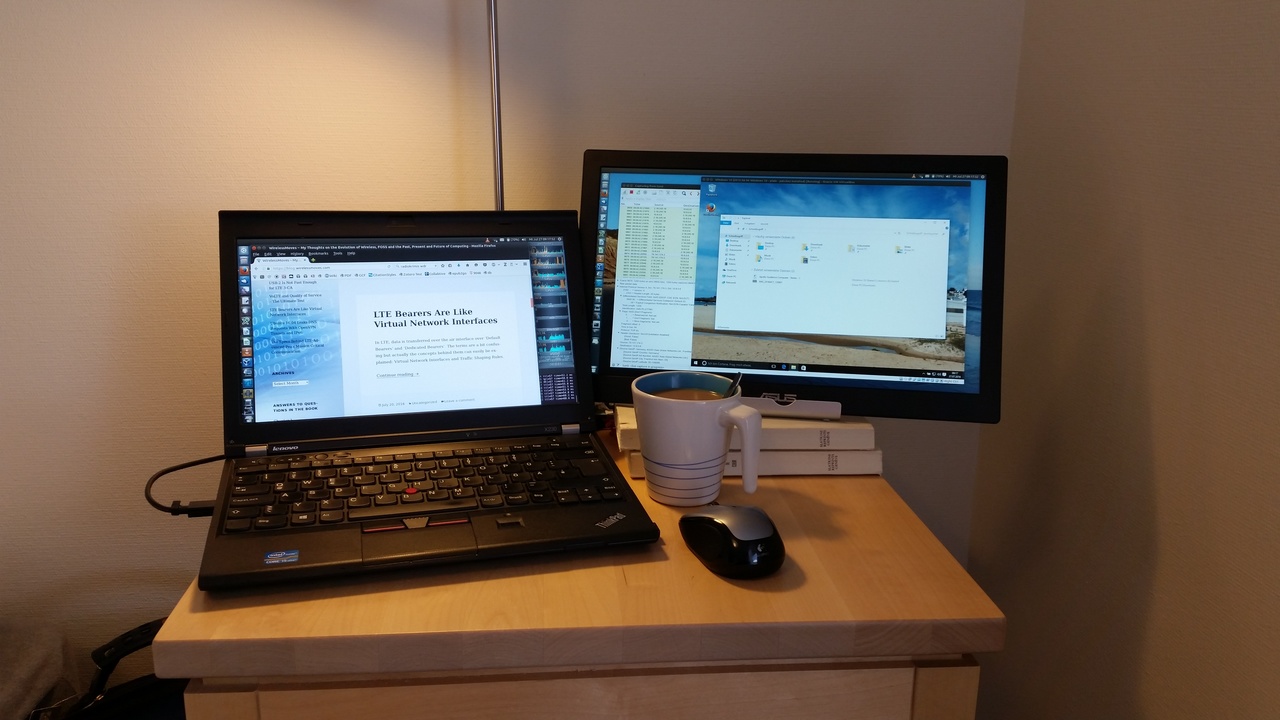 Ever since I discovered the use of a TV in hotel rooms for streaming videos or its use as a second screen almost a decade ago, I’m always taking a DVI/HDMI cable along when I travel. These days, however, TVs in hotel rooms are getting larger and larger. While this is great news for video streaming from the PC, they become less and less useful as a second screen for work. But recently I’ve found a great alternative: Portable USB screens.
Ever since I discovered the use of a TV in hotel rooms for streaming videos or its use as a second screen almost a decade ago, I’m always taking a DVI/HDMI cable along when I travel. These days, however, TVs in hotel rooms are getting larger and larger. While this is great news for video streaming from the PC, they become less and less useful as a second screen for work. But recently I’ve found a great alternative: Portable USB screens.
Have a look at the picture above on the left, this is how my setup looks like. I’ve decided to go for an Asus 169B+ USB3 TFT display as at 15″ it comfortably fits into my suitcase and even in my backpack. As it doesn’t have a battery inside it only weighs 800 grams, i.e. it’s definitely “portable”. Also, there’s no extra power supply as both the video signal and power are delivered via USB3. In other words, there’s only a single cable.
I’ve known about USB screens for a while now but what I didn’t know so far is that while Asus only ships drivers for Windows and Mac, there are drivers available for Ubuntu from DisplayLink the original chipset manufacturer. Since the driver is generic it’s likely that bigger and smaller USB TFT displays of other manufacturers work as well.
In practice the driver requires DKMS to be installed from Ubuntu’s software repository (so the DisplayLink kernel driver is re-compiled automatically when a new kernel is installed). Installing the driver is done in seconds in Ubuntu 16.04, 64 bit. No configuration is necessary except switching on the second display in my display settings. The driver also works with Ubuntu 14.04, I tried it on a 32 bit installation, but needs a kernel version of 3.8 or newer. This requires an LTS kernel upgrade for Ubuntu 14.04 or 14.04.1 which is easy to do, however.
The display has a resolution of 1920 x 1080 pixels (full HD) which is a lot for a 15″ display. Some might consider 15″ to be small but since it’s for traveling one sits closer to the screen than one would at home in front of a ‘normal’ screen so it feels a lot bigger than 15″ in practice.
From a performance point of view I was surprised that even videos are rendered beautifully without any problems in full screen mode despite the screen being attached over USB and not over DVI or HDMI. One disadvantage of the USB connection is, however, that the kernel driver uses half a CPUs worth of computing power even if nothing changes on the screen. I couldn’t feel a speed impact on my other applications but my notebook’s fan runs more often than without the screen.
While some of the display driver’s code is open source and available on Github, some parts of it are delivered as a binary blob. I wasn’t quite comfortable with that but many other hardware components in my notebook also require a blob. From a stability point of view I have almost no complaints after a week of use. One minor thing I noticed is that once every couple of hours the screen goes dark for a few seconds and then comes back as if nothing had happened. Not nice but since it doesn’t happen very often it’s acceptable. Also, I noticed that the driver requires some CPU power even if the display is not connected. This can be fixed by stopping the “displaylink” service but I’m sure the manufacturer could come up with a better solution in the future.
And finally a word or two about how to set it up on a desk. The TFT display comes with a slim carrying case that can be folded to act as a desktop stand. The disadvantage is, however that a lot of space is required behind the screen which one often doesn’t have in hotels. The solution is a generic tablet stand like in the picture above which requires zero space behind the display. As the display is very light there are no stability problems despite its size. As can also be seen on the image even a small table holds both my notebook and the second screen as it can be put very close to the notebook and can use space to the side of the table as well. A perfect solution even when only little space is available!
Altogether I’m very happy with this setup and at a price point of 220 euros it’s quite affordable and worth it for me as I travel a lot.
Giles has posted a link to a tremendous bit of writing advice by Dr Lucy Rogers.
The only point I'd quibble with is this one:
"Aim for the shortest sentence possible. Long sentences are hard to read and understand. A sentence of seven words is easy. Sentences longer than 29 words are hard going."
Mostly short sentences yes. But, occasionally, chuck something longer in there to break up the rhythm.
Like this:
By Gary Provost. Though I'm not sure who added the colour. Maybe here. And I'm not sure why the reader has to be 'him'.